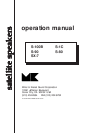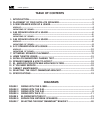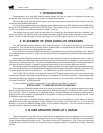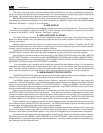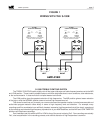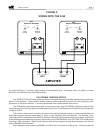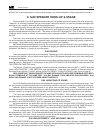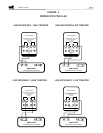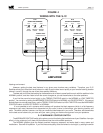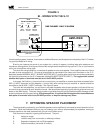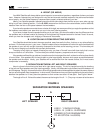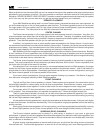
satellite speakers
page 4
There are a very wide variety of premium speaker cables available from a number of specialist manufacturers.
We do not endorse any specific brand of premium cable, but we do recommend using as high quality a cable as fits
your budget. Using better quality cables will improve the sound of your Satellites.
M&K Satellites are not designed for bi-wiring. Do not use the four input terminals to bi-wire your Satellites, as this
may damage your amplifier and speakers. If you wish to bi-amplify your Satellites in combination with an M&K Powered
Subwoofer, see Section 11 (page 18) for more details.
S-100B HOOKUP
There is one set of terminals on the backplate, one Red terminal and one Black terminal. Connect the Positive
(+) lead from your amplifier or receiver to the RED (+) INPUT terminal, and the Negative (-) lead from your amplifier
or receiver to the BLACK (-) INPUT terminal. See Figure 1 (page 5).
S-100B VARIATIONS OF SOUND
Your M&K Satellites reproduce sound with exceptional transient accuracy and a very wide dynamic range.
Because of these qualities, they give outstanding results with any high quality amplifier or receiver in virtually any
listening environment.
However, getting the best tonal balance in any given room involves many variables. Therefore, your S-100B
Satellites allow you to alter their tonal balance in order to get the ideal sound quality at your favorite listening location
(where it counts!), through the use of two three-position switches.
The best way to find the ideal setting for these switches is to listen to some familiar music with the switches in the
NORMAL position, and then listen to how the sound changes as you set the switches to the other positions.
If you find the sound to be too bright or harsh-sounding, try the TREBLE CONTOUR switch in the MID TWEETER
or LOW TWEETER position. You can also try setting the MIDRANGE CONTOUR switch to MID or LOW EFFICIENCY.
If the sound lacks brilliance or sounds bass-heavy, set the TREBLE CONTOUR switch to HIGH TWEETER or set the
MIDRANGE CONTOUR switch to MID EFFICIENCY or NORMAL.
It is not possible to tell in advance which settings will produce the ideal response (which is a flat frequency
response at your ears), because this is dependent on your room, its size, its furnishings, your listening location, and
more. The switch choices, however, can help you create the ideal response in your room. Therefore, set the switches
for the best sound balance for your ears and your room, giving you maximum enjoyment from your speakers.
S-100B MIDRANGE CONTOUR SWITCH
The MIDRANGE CONTOUR switch is the primary control for altering the tonal balance of your Satellites. Its major
effect is in the midrange, but it does shift the balance over the entire audible spectrum.
The NORMAL position gives the flattest anechoic frequency response, and works well in many rooms and
installations. Start with this position. If you find the sound quality to be too forward or too bright, there are two additional
choices of tonal balance, MID EFFICIENCY and LOW EFFICIENCY. Relative to NORMAL, the MID position is
mellower, with less high frequency energy and a more recessed sound. The LOW EFFICIENCY position has an even
warmer mid-bass sound and a more distant perspective.
When you are locating the speaker directly on a surface such as a wall, floor or ceiling, you may find that using
the SPECIAL INPUT terminals gives the best response. This is because this position is designed to account for the
increase in midbass response that occurs when a speaker is directly against a room surface. (This is referred to as
2π space, as opposed to a speaker located out in a room, which is known as 4π space. The SPECIAL INPUT terminals
should be tried first for 2π conditions, and the regular INPUT terminals should be tried first for 4π conditions).
If you are optimizing your system's response with a third-octave equalizer and calibrating the equalizer by using
a third-octave analyzer, use the SPECIAL input terminals. The SPECIAL terminals will give you maximize output and
dynamic range, while placing the least demand on your power amplifier.
The MID and LOW EFFICIENCY positions trade efficiency and output for a warmer, mellower sound. If your room
has a lot of reflective surfaces or you have an otherwise bright-sounding system, try these positions. Some listeners
will prefer one of these to the NORMAL position in any room, so we suggest that you at least make a comparison.
All positions have the same power handling capacity, but their output varies (from highest to lowest) as follows:
SPECIAL input terminals, NORMAL, MID EFFICIENCY, and LOW EFFICIENCY. Bear in mind that as you switch to
a higher efficiency, it requires a higher setting of the subwoofer level. Conversely, when you switch to a lower efficiency,
the subwoofer level should be set lower.



